MATHINFINITY
- Special Activities
- MATHINFINITY

EASTERN MATHEMATICIANS

Zhang Heng, Eastern Han period. He calculated two approximate values of Pi (π), 3.14166 and 3.1623, from his astronomical measurements. This was even 500 years earlier than the Indians and the Arabians.

Liu Hui, Wei Jin period. He had calculated 3.1416 for Pi (π) while using the cyclotomic method to calculate the area of a 3072-gon. It is called the Hui Lu.

Zu Chongzhi, State of Song during North-South dynasties. He introduced the concept of Annual Precession in the calendar. He also calculated the value of Pi (π) to be 3.1415926~3.1415927. The Europeans were able to calculate these values only in 1573.
Zhao Shuang, State of Wu during the Three Kingdoms period. He wrote an article in the notes to prove and explain the Gou-gu Theorem while in-depth study of the ZhouBi Suan Jing.

Jia Xian (~1010 - 1070), the Northern Song Dynasty. He was the earliest to use a triangle to show how the coefficients are expanded according to the binomial theorem. This had been quoted by Yang Hui who called it as "Yang Hui's Triangle", but later it was renamed as "Jia Xian's Triangle". It was actually the same as the Pascal's Triangle of the 17th century.
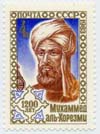
Mohammed ibn musa Al-khowarizmi (~783-850), Persian. His explanation on the simple equation and quadratic equation has led to algebra. In the Compendious Book on Calculation by Completion and Balancing, he has systematically introduced the Hindu-Arabic numerals, decimal system and their calculation methods.
Shen Kuo (1031 - 1095), the Northern Song Dynasty. He has a lot of scientific achievements during his lifetime. In mathematics, he created the Xi Ji Shu from his study in the gaps of stacked wine jars and chess. He also created the Hui Yuan Shu from the relationship between arc, string and arrow.
Li Ye (1192 - 1279), Jin and Yuan dynasties. His achievements include changing the tradition by having both positive and negative constants; listing out polynomial equations using the Tian Yuan Shu; solving problems of the fractional equations and using algebra to reduce the degree of equations.
Qin Jiushao (1208 - 1261), the Southern Song Dynasty. His Da Yan Qiu Yi Shu is named as the Chinese Remainder Theorem. This is a method of calculating linear congruence equations regarding the number theory. Its explanation is the same as the Gauss' law.

Guo Shoujing (1231 - 1316), the Yuan Dynasty. He was specialized in formulating the calendar and designing and monitoring astronomical instruments. He had combined data and calculated the length of a year to be 365.2425 days. By studying over 70 different types of calendar since the Western Han Dynasty, he had worked out the Shoushi Calendar that was used for as long as 360 years in the history of China.
Yang Hui (~1238 - 1298), the Southern Song Dynasty. Besides recording and explaining the Yang Hui's Triangle, he was the first mathematician in the world to arrange numbers in the vertical-horizontal diagrams and discuss about its construction, which is the magic squares of today.
Zhu Shijie (1249 - 1314), the Yuan Dynasty. He was the first person in China's history of mathematics to put forward the correct method of multiplying positive and negative numbers. The Suanxue Qimeng has recorded the abacus division rules, which is almost identical to the rules of today.
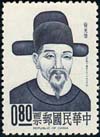
Xu Guangqi (1562 - 1633), the Ming Dynasty. He had brought in advanced astronomical knowledge from Europe and translated the first six parts of the Elements together with Matteo Ricci. He was the first one to define the specialized terminology that we use today such as point, line, plane, parallel lines, obtuse angle, acute angle, triangle, polygons and so on.
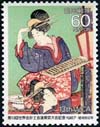
Yoshida Mitsuyoshi (1598 - 1672), Japanese. He promoted the use of abacus in Japan through his work Soroban.

Takakazu Seki (1642 - 1708), Japanese. His major contributions included the development of Boshoho, methods of solving simultaneous equations and establishment of theories about the geometric problems related to arc and ball.
Yasuaki Aida (1747 - 1817), Japanese. He invented the first symbol to represent "equal to" in Japanese mathematics.
Li Shanlan (1810 - 1882), the Qing Dynasty. He established the concept of "cone". He was also one of the translators of the Element. Numerous important Chinese scientific terms were created by him, for example algebra, function, equation, differentiation, integration, progression, plant, cell, etc.
Yoshio Mikami (1875 - 1950), Japanese. He was the author of The Development of Mathematics in China and Japan.
Teiji Takagi (1875 - 1960), Japanese. He studied the algebraic number theory and he was the founder of the Class Field Theory.
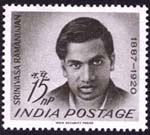
Srinivasa Ramanujan (1887 - 1920), Indian. His research and discoveries included the Ramanujan Theta Function, Gamma Function, Forma Modular, Hipergeometrical Series, Divergent Series, Prime Number Theorem, etc.
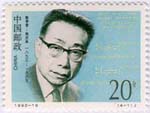
Xiong Qinglai (1893 - 1969), Chinese. He focused on the study of Function Theory and defined the entire function of infinite order, namely the Xiong's Infinite Order.
Chen Jiangong (1893 - 1971), Chinese. He mainly studied the real variable function theory, complex variable function theory, differential equation, etc. He was one of the founders of function theory in China.
Oka Kiyoshi (1901 - 1978), Japanese. He was known for the Oka's Coherence Theorem.
Su Buqing (1902 - 2003), Chinese. He was the founder of Differential Geometry in China. He also had outstanding achievements in the study of Affine Differential Geometry and Projection Differential Geometry.
Tadao Tannaka (1908 - 1986). Japanese. He is best known for developing the Theory of Tannaka-Krein Duality.

Hua Luogeng (1910 - 1985), Chinese. He was known for the Hua's Theorem, Brauer-Cartan-Hua Theorem, Hua's Identity, Hua's Matrix Inequality, Hua's Lemma, Hua's Inequality, etc.
Chern Shiing-shen (1911 - 2004), Chinese. His epoch-making accomplishments included the completion of the generalized Gauss-Bonnet Theorem of Riemannian Manifolds and Characteristic Classes of Hermitian Manifolds. The concepts, methodology and tools that he brought in were far beyond Differential Geometry and Topology, and they had become essential parts of modern mathematics.
Kodaira Kunihiko (1915 - 1997), Japanese. He was the founder of Japanese Algebraic Geometry.
Kiyoshi Ito (1915 - 2008), Japanese. He created Stochastic Calculus and established theories for stratonovich integral and stochastic differential equation. His researches were widely adopted in mathematical finance.
Iwasawa Kenkichi (1917 - 1998), Japanese. He was known for his influence on Algebraic Number Theory.
Hiroshi Haruki (? - 1997), Japanese. He was specialized in functional equations. He is best known for discovering the Haruki's Theorem and Haruki's Lemma in plane geometry.
Wu Wenjun (1919 - 2017), Chinese. His major achievements were mainly in the areas of Topology and mathematical mechanization. In the late 1970s, he focused on the study of Mechanical Geometry Theorem Proving.
Feng Kang (1920 - 1993), Chinese. He created the Finite Element Method, Naturalization and Natural Boundary Element Method alone by himself. He opened up new areas of research in Symplectic Geometry and Symplectic Form. He was also a pioneer in the study of computational mathematics.
Hidehiko Yamabe (1923 - 1960), Japanese. He was best known for solving Hibert's fifth problem.
Katsumi Nomizu (1924 - 2008), Japanese. He was best known for the Kulkarni-Nomizu product and foundations of differential geometry.
Yutaka Taniyama (1927 - 1958), Japanese. The Taniyama-Shimura Conjecture that he and Goro Shimura proposed was used by the British mathematician, Andrew Wiles, to solve the Fermat's Last Theorem.
Masayoshi Nagata (1927 - 2008), Japanese. He was best known for the Nagata Ring.
Mikio Sato (1928 - ), Japanese. He was best known for the Sato-Tate Conjecture of L-function in the Number Theory.
Wang Yuan (1930 - ), Chinese. He has outstanding achievements in the research of the Goldbach Conjecture. He has proved the propositions "3+4" and "2+3". He is highly respected for his Hua-Wang Method.
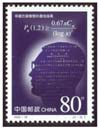
Chen Jingrun (1933 - 1996), Chinese. He used the Chen's theorem for the representation of "a large even integer as the sum of a prime and the product of at most two primes". This had put him in a leading position in the study of the Goldbach's Conjecture.
Pan Chengtong (1934 - ), Chinese. He proved "1+5" and participated in proving "1+4". He focused on studying the Analytic Number Theory. He has major contributions in the study of the Mean Value Theorem and Goldbach's Conjecture.
Yang Le (1939 - ), Chinese. He is best known for the Zhang-Yang Theorem and Yang's Problem on Derivative Functions with Maximal Deficiency Sum.
Masaki Kashiwara (1947 - ), Japanese. He has established the algebraic analysis and D-module Theory together with Mikio Sato.
Yau Shing-Tung (1949 - ), Chinese. He has solved the Calabi Conjecture in differential geometry. His proof has become the Yau's Theorem. The new space that he discovered is named as Calabi-Yau Manifold, which is essential to the Superstring Theory.
Shigefumi Mori (1951 - ), Japanese. He is specialized in Algebraic Geometry and Birational Geometry. His classification of the Three-dimensional Algebraic Varieties is called the Mori's Program.
Shinichi Mochizuki (1969 - ), Japanese. He focuses his work on the Number Theory, including the arithmetic geometry, the Hodge theory, etc.
Ngo Bao Chau (1972 - ). He was born in Vietnam. He is known for proving the Fundamental Lemma of Automorphic Forms of Robert Langlands and Diana Shelstad.
Tao Chi-Shen, Terence (1975 - ). He belongs to the second generation immigrants from Hong Kong in Australia. Now he mainly focuses on the study of harmonic analysis, partial differential equations, combinatorial mathematics, analytic number theory and theory of representation. He has proposed the Green-Tao Theorem together with Ben Green. It is a theorem to prove arithmetic progressions formed by prime numbers.
Maryam Mirzakhani (1977 - 2017). She was born in Iran. Specialized in geometry, she focuses her study in the Teichmuller Theory, Hyperbolic Geometry, Ergodic Theory and Symplectic Geometry. She is the first female mathematician to obtain the Fields Medal for her study in the symmetry of curved surface.
